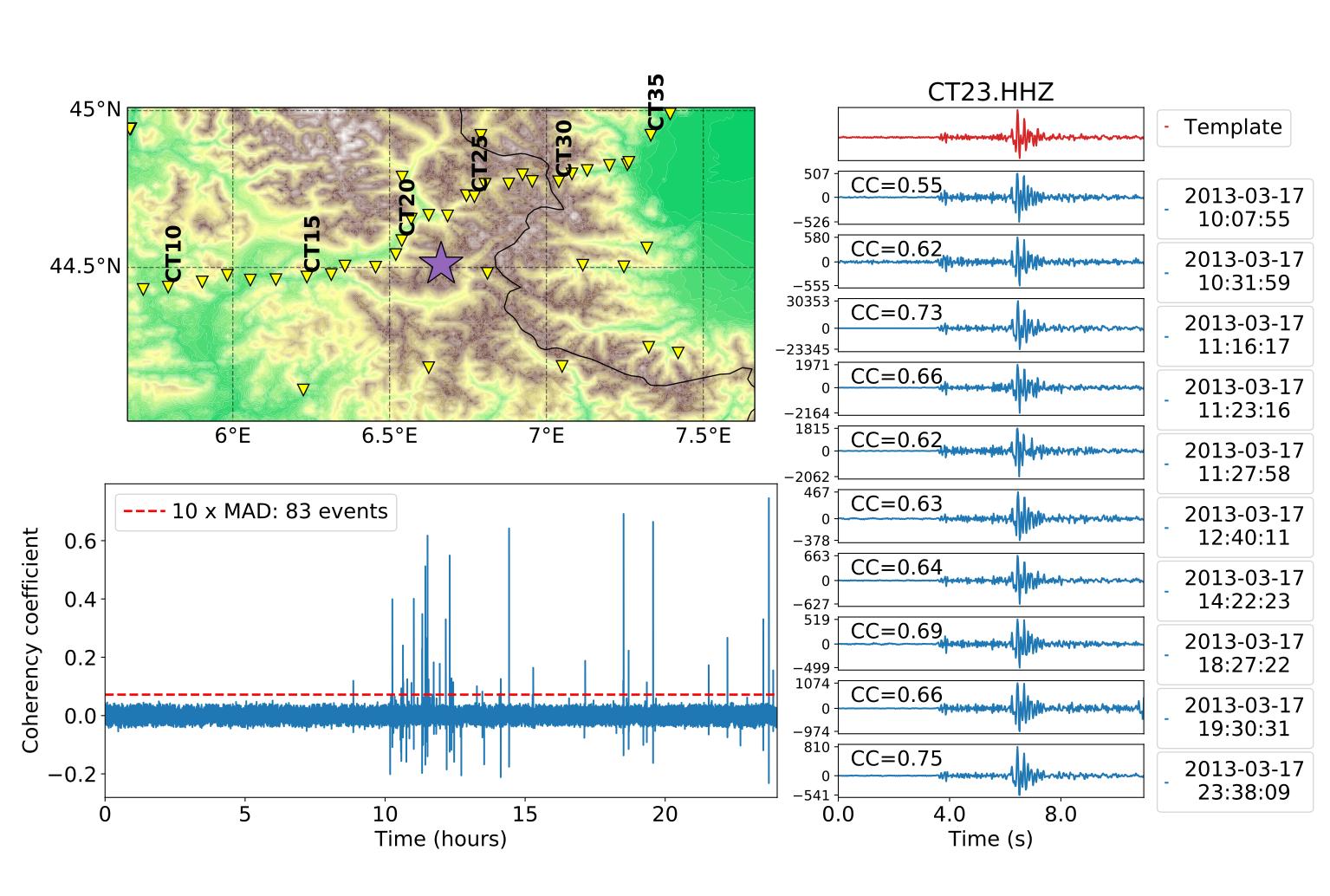Example
Description of the Arguments
The wrapper function matched_filter takes 6 arguments (5 arguments only for the Matlab version):
templates: array with the template waveforms to search for in the continuous data,
moveouts: array with the relative arrival times (in samples) associated with each template,
weights: array with the weights used in the weighted sum of the correlation coefficients,
data: array with the continuous data,
step: temporal step (in samples) between two consecutive calculations of the correlation coefficient,
arch (Python only): architecture used to run FMF (
'cpu','precise'or'gpu', default is'cpu'),normalize (Python only):
'short'or'full'normalization on the computation of the correlation coefficient.
Because Matlab and Python use different conventions for the mapping between the indexing and the location in memory, the input arrays have different dimensions depending on whether Matlab or Python is used.
Matlab
In Matlab, the most contiguous dimension is the first one. Therefore, the arrays should have dimensions:
continuous data (n_samples_data, n_components, n_stations)
template waveforms (n_samples_template, n_components, n_stations, n_detections)
moveouts (n_components, n_stations)
weights (n_components, n_stations)
Python
In Python, the most contiguous dimension is the last one. Therefore, the arrays should have dimensions:
continuous data (n_stations, n_components, n_samples_data)
template waveforms (n_detections, n_stations, n_components, n_samples_template)
moveouts (n_stations, n_components)
weights (n_stations, n_components)
Output of FMF
FMF returns the time series of the average correlation coefficients (CC) calculated for each template given in input. Therefore, the output has dimensions:
Python: (n_templates, n_correlations),
Matlab: (n_correlations, n_templates).
The number of correlations (n_correlations) is determined by the length of the continuous data and the temporal step you used.
Given the 6 input arguments described here, the correlation coefficients are obtained by calling the wrapper function in the following way:
cc = fast_matched_filter(templates, moveouts, weights, data, step)
cc(:, i) is the correlation coefficient time series for the i-th template.
cc = matched_filter(templates, moveouts, weights, data, step, arch='cpu' or 'gpu')
cc[i,:] is the correlation coefficient time series for the (i+1)-th template.
To perform earthquake detection from the CC time series, we typically look for the samples that exceed a threshold defined by 8xRMS or 10xMAD (see figure below).
